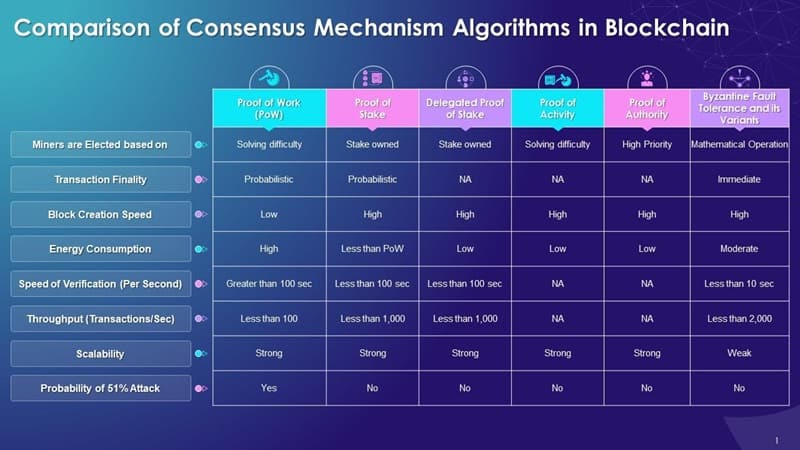Cryptocurrency Unveiled: 7 Revolutionary Real-World Applications
Dive deep with me into the bold waters of real-world applications of cryptocurrency and uncover how this digital cash is changing lives. We’re not just talking tech talk; we’re seeing everyday shopping, sending cash across seas, and cool tech that seals deals without a handshake. It’s not just about bits and bytes; it’s about new ways to buy, send money, and invest – safe and fast. Imagine going shopping and paying with crypto – it’s happening now! And there’s more where that came from; art’s getting a tech twist, and your cash can cross borders like never before. It’s a whole new world out there, and I’m here to show you how it’s unfolding, one bitcoin at a time.
Revolutionizing Retail: Cryptocurrency For Everyday Purchases
The Expansion of Crypto Payment Solutions in E-Commerce
In the fast-paced world of e-commerce, crypto payment solutions are making a splash. These days, many online stores welcome Bitcoin and other digital coins. This means you can buy things with crypto just like you would with a credit card. When I first heard about this, I was wowed. Imagine shopping on your phone and paying with Bitcoin. It’s happening now and growing fast.
Why use crypto for shopping, you ask? For starters, it’s quick. It moves like lightning across borders, no banks needed. This cuts down on fees, making things easier on your wallet. Plus, it’s secure, thanks to blockchain tech. Each time you use crypto, the details get locked in a digital ledger. You don’t need to stress about your money getting lost or stolen.
Embracing Bitcoin for Purchases and Stablecoin Transactions
But what is the fuss with Bitcoin and stablecoin transactions? Here’s the deal: Bitcoin is like digital gold. Its value can jump up and down, which makes it exciting. Stablecoins, on the other hand, keep a steady value. They’re pegged to assets like the dollar. So, when you buy stuff with stablecoins, it’s like using regular money, but with a crypto twist.
Let’s say you want a new gaming console on an online store. By using stablecoins, you know exactly how much you’re spending. No surprises. And with Bitcoin, you can often snag discounts. Some merchants offer price cuts if you use crypto because it saves them money on fees.
Using digital currencies to shop is a win-win. It’s good for you – and for businesses. It opens doors to new customers around the globe. Plus, with smart contracts and blockchain, everything’s transparent. You get what you pay for, and shops get their funds fair and square.
Think about this: Shopping with crypto is like giving power back to the people. We’re no longer tied down to just the options our banks provide. We choose how to spend our digital cash. It’s reshaping how we think about money and shopping. And as someone deeply invested in this field, I firmly believe we’re just at the start. The days of digital wallets becoming as common as carrying a smartphone are not far off.
Watching this space evolve, it’s clear: cryptocurrencies are more than just a trend. They’re forging new paths for everyone to buy and sell with freedom. And the best part? It’s only going to get better as technology improves and more folks hop on the crypto train.
In every corner of retail, from a tiny boutique to giant e-stores, crypto is set to make a mark. It’s a thrilling time. And for those of us who’ve been following the journey, every new step brings us closer to a world where digital money is king.
Remapping the Financial Landscape with Blockchain-Based Remittances
Efficient Cross-Border Payments with Crypto
Folks from all walks of life send money across borders. They may be away from home, running businesses, or helping family. Traditional ways are slow and costly. Here’s where crypto steps in. Cryptocurrency in retail payments lets us send money fast and for less cash. It weaves our world closer together. Now, let’s dive in.
People often ask, “How do crypto payment solutions work for cross-border transfers?” Crypto moves money faster than banks and at a fraction of the cost. You use a digital wallet and send funds to another wallet anywhere in the globe. No banks in the middle, just the blockchain keeping track.
Bitcoin has become a big player in this game. Some use Bitcoin for purchases when they trade across seas. It cuts the wait and drops the fees. You could buy goods from far places and pay with Bitcoin the same day!
There’s more to look at though – stablecoin transactions. These coins don’t jump in value like others. So people like using them for sending money too. They’re tied to things like the US dollar, making them stable for payments.
The Role of Decentralized Finance (DeFi) Platforms in Streamlining Remittances
Now let’s talk about DeFi. These are places on the web where money works without banks calling the shots. Folks say, “What’s DeFi doing for remittances?” It’s making them better, cheaper and open to all. With DeFi, any person can interact with the global economy with just the internet and a device.
Here’s where smart contracts use cases shine. They are like deals that computers check and complete on their own. They help make sure everyone gets what they agreed on without waiting for a person to say “Yes, it’s all good.”
But DeFi isn’t just about sending cash. It’s also about changing the way we look at what’s valuable. Tokenization of assets, for example, can turn real things like houses into digital pieces that you can buy and sell online. Imagine owning part of a painting or building without seeing it in person. That’s tokenization for you.
Remapping finance with blockchain is more than tech talk. It’s about making life better. It’s about a Filipino nurse in London who can now send money home quick and cheap. It’s about a small business in Kenya buying supplies from China without losing sleep over transfer times.
Cryptocurrency in retail payments, crypto payment solutions, and the use of Bitcoin for purchases are just the start. With all that’s happening in DeFi, from smart contracts to tokenization, we’re heading into a world where money moves in new, bright ways. The tech spreads fair chances and growth across the globe. We’re all part of this new map, and it looks like we’re just getting started.
The Emergence of Smart Contracts and Asset Tokenization
Smart Contracts Use Cases Across Industries
Smart contracts are like super-powered agreements. They run on blockchain networks and automatically do what people set them up to do. Imagine not having to wait for someone to check a box or sign a paper. When a condition is met, the contract just goes! It sends money, updates a record, or notifies someone, fast and without mistakes. They are great for many jobs.
Let’s think about selling a house. Normally, it’s a lot of work with lots of people involved. A smart contract simplifies it. Once all the terms are met, like getting a secure payment, the ownership can switch to the buyer without all the usual waiting time. This use of smart contracts is changing how we buy homes.
But it’s not just real estate getting a boost. Companies that ship goods use these contracts too. They can track a product from factory to front door. If something goes wrong, everyone knows right away. This trust makes everyone feel at ease, knowing they can see everything that is happening.
Even artists and musicians are getting in on smart contracts. These creative folks use them to sell their work and get their money straight away. No more waiting on middlemen. They can even get paid a little bit each time someone enjoys their art or song, thanks to smart contracts.
Unlocking Investment Potential through Tokenization of Assets
Tokenization turns real stuff like buildings or paintings into digital chunks called tokens. It’s like if we broke a candy bar into pieces and each piece became a special digital bit. Now, you could own just a piece of that candy bar, not the whole thing. This makes investing in big things like skyscrapers way easier because you can own just a part. It’s way cheaper, and you can do it from anywhere in the world.
How does it work? Well, these tokens live on a blockchain, just like cryptocurrency. People buy them, trade them, and the cool part is, they can be pretty small. So, regular folks can now get into investments that used to be just for the rich. Plus, they can sell their share much easier than if they had to sell a whole building.
What’s more, owning a token can be way safer than holding onto a piece of paper that says you own something. Since it’s on a blockchain, it’s tough to mess with, and you can always check to be sure you still have it. It’s open for everyone to see, building trust among buyers and sellers.
There’s excitement around tokenization for a good reason. It helps people get into investing without needing a lot of money. It opens doors for many to grow their savings and be a part of something bigger. Smart contracts and tokenization are not just future talk. They’re here now, reshaping how we deal, share, and grow our money.
Cryptocurrency’s Influence on the Art Market and Collectibles
Non-Fungible Tokens (NFTs): A New Paradigm for Art Ownership
NFTs are shaking up how we think about art. An NFT is a one-of-a-kind digital item. Artists use them to sell their work in a new way. People buy these artworks with cryptocurrency. It’s like your usual art buy, but it lives online and is unique. It’s like trading cards, but for the digital age.
Imagine owning a rare piece of digital art. Only you own it, thanks to NFTs. They let you prove it’s yours. This proof lives on a blockchain, so no one can mess with it. It’s a secure way to own something truly yours in the digital space.
When you buy an NFT, you get something no one else has. It can be artwork, a song, a video – anything digital. Your ownership is recorded on a public ledger called a blockchain. This ledger does not allow fakes. It’s like having a signed certificate from the artist, but better.
Artists now reach fans worldwide with NFTs. They make art, music, or videos and sell them as NFTs. Fans can own a piece of their favorite artist’s work from anywhere. NFTs make it easy and fair for both the artist and the fan.
NFTs can also grow in value, just like fine art. Owning an NFT can be an investment. If the artist gets more famous, your NFT could be worth more. It’s a new way to collect art and maybe earn from it too.
Cryptocurrency Transactions Transforming the Authenticity and Provenance in Art
Crypto is also changing how we check if art is real. Every artwork has a history. Who made it? Who owned it? This is its provenance. Crypto makes keeping track of this simple. Each time art is sold, a blockchain keeps records. This way, you know if the art is real and where it’s been.
Before, proving art was real was hard. Papers got lost, and fakes appeared. With crypto, each artwork’s history is on the blockchain. Safe and sound. No one can change it. So, when you buy art with crypto, you’re sure it’s the real deal.
Using crypto for art sales has more pluses. Money moves fast and safe across the world. Artists in Africa can sell to fans in Europe easily. They skip banks and fees. Fans get art they love; artists get paid quick. Win-win!
These changes are big. They are rewriting the rules of the art world. With NFTs, art collectors live everywhere, not just in big cities. They can be anyone with crypto and a love for art. This is just the start. The mix of art and crypto is an exciting new world for us all.
To wrap it up, we dove into how crypto is changing the way we buy things, from clothes online to coffee at the corner shop. We saw how using Bitcoin and stablecoins makes things simple and fast. Then, we looked at how money moves across borders with blockchain, making it cheaper and quicker than old ways. Next, we learned about smart contracts and how they’re used in different jobs to make things run smooth. Plus, we found out how tokenizing stuff like art can open doors to new investors.
Lastly, we saw the big splash crypto’s making in art, with NFTs shaking up who owns what and making sure it’s real. It’s clear, crypto isn’t just for tech whizzes anymore—it’s here for everyone and it’s making waves in how we deal with money and more. The future’s bright, and it’s got crypto written all over it!
Q&A :
What are some common uses of cryptocurrency in everyday life?
Cryptocurrencies have found their way into daily transactions and purchases, offering an alternative to traditional currency. They can be used for online shopping, paying for services, and even buying food at restaurants that accept digital currencies. Additionally, cryptocurrencies provide an easy way to send remittances to family and friends across borders, often with lower fees than traditional banking systems.
How is cryptocurrency changing the business landscape?
The integration of cryptocurrency in business is revolutionizing multiple industries by enabling secure, decentralized transactions. Businesses are capitalizing on blockchain technology for not only payments but also for supply chain management, smart contracts, and raising capital through Initial Coin Offerings (ICOs). This shift is fostering a new era of transparency and efficiency in business operations.
What are the real-world applications of cryptocurrency in the tech industry?
Within the tech industry, cryptocurrency is driving innovation in various ways. It facilitates microtransactions for digital services, supports the development of decentralized applications (DApps), and is integral to the creation and exchange of Non-Fungible Tokens (NFTs). Moreover, the underlying blockchain technology is essential for enhancing data security and user privacy in an increasingly digital age.
Can cryptocurrencies be used for investment and wealth management?
Cryptocurrencies have become a significant asset class for investors looking to diversify their portfolios. Many individuals and institutions are investing in various digital currencies, leveraging their volatility for potential high returns. Beyond buying and holding, cryptocurrencies are used in more sophisticated financial activities such as staking, lending, and participating in decentralized finance (DeFi) protocols.
What role do cryptocurrencies play in global financial inclusion?
Cryptocurrencies are increasingly recognized for their ability to foster financial inclusion on a global scale. They provide access to financial services for the unbanked and underbanked populations by eliminating the need for traditional bank accounts. Digital currencies enable secure and accessible saving, borrowing, and transacting mechanisms, bridging the gap for those excluded from conventional financial systems.






